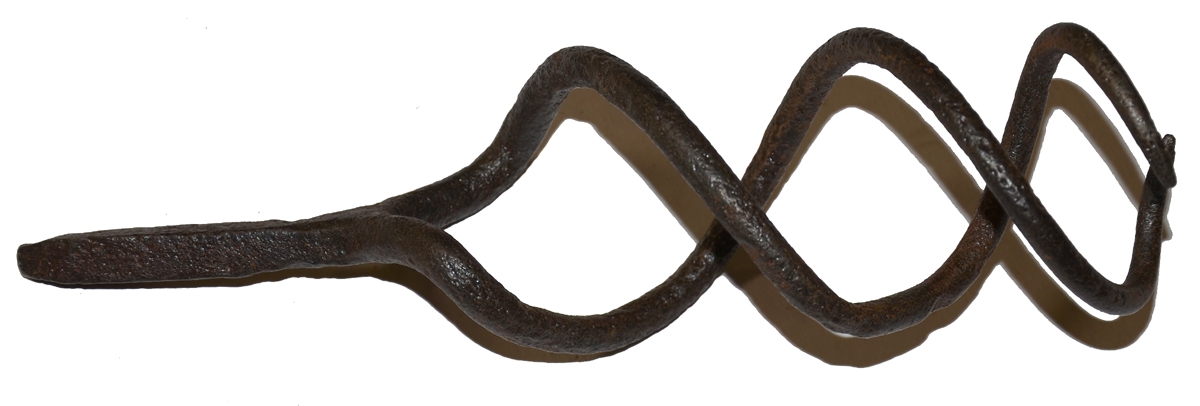site search
online catalog
REVOLUTIONARY WAR ARTILLERY CANNON WORM, LIKELY AMERICAN

Hover to zoom



$225.00 SOLD
Quantity Available: None
Item Code: 2020-908
These double-helix iron implements were among the basic tools of an artillery crew serving a muzzle-loading cannon. Swabbing out the bore with a sponge staff between shots in action was an essential part of artillery drill to extinguish any remaining embers from a cloth powder bag either by the damp wool sponge or from the effect of sealing the bore from oxygen. The worm was a necessary auxiliary tool to actually extract any residual debris from the bore, a powder bag that failed to ignite, etc.
This example is in good condition and solid, showing overall shallow pitting, but is complete a displayable. It is designed to be mounted by its simple, long base spike on the end of a staff, which would have had a ferrule on the end to prevent the wood splitting. It is very serviceable and somewhat crude, suggesting it might be an American blacksmith’s product. It measures a little over 9 inches long, including the base spike, and can compress to about three-inches in diameter, making it for a 3, 4 or possibly 6-pound field gun. Artillery implements of the period are scarce. This would look great with an artillery priming horn or excavated shot, which occasionally show up. [sr]
~~~~~~~~~~~~~~~~~~~~~~~~~~~~~~~~~~~
THIS ITEM, AS WITH ALL OTHER ITEMS AVAILABLE ON OUR WEB SITE,
MAY BE PURCHASED THROUGH OUR LAYAWAY PROGRAM.
FOR OUR POLICIES AND TERMS,
CLICK ON ‘CONTACT US’ AT THE TOP OF ANY PAGE ON THE SITE,
THEN ON ‘LAYAWAY POLICY’.
THANK YOU!
Inquire About REVOLUTIONARY WAR ARTILLERY CANNON WORM, LIKELY AMERICAN
Most Popular
Historical Firearms Stolen From The National Civil War Museum In Harrisburg, Pa »
Theft From Gravesite Of Gen. John Reynolds »
Selection Of Unframed Prints By Don Troiani »
Fine Condition Brass Infantry Bugle Insignia »
Large English Bowie Knife With Sheath 1870’S – 1880’S »
Imported (Clauberg) Us Model 1860 Light Cavalry Officer's Saber »
featured item
A CONFEDERATE SURGEON'S GREATCOAT, SASH AND SHIRT
Dr. J. P. Rasser was contracted by the Confederacy and among his duties in Georgia was the examination of Conscripts for the Army. THE OVERCOAT or army great coat is certainly "Homespun" that is a woven woolen fabric originally made from homespun… (1268-706). Learn More »


